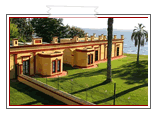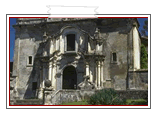![]()
The Pampas plains are amongst the richest areas in Argentina. They have the magic of wide-open spaces with an unlimited horizon, and they are the land of the gauchos, traditional Argentine country men.
The estancias (ranches) in the Argentine Pampas are remarkable because of their varied architecture. They were built in widely differing styles such as colonial Hispanic-American, English Tudor, and classic French. Many of them have been transformed into tourist accommodations.
Towards the Northwest of these plains are the Sierras of Córdoba. Its fertile valleys contrast with deserts and salt pans, a particularly appealing landscape. Towards the North, scattered chapels and “estancias” begin to appear. These constructions date back to the 17th and 18th centuries, and many of them are a Jesuit legacy.

Province of Buenos Aires
Area: 307.571 Km²
Population: 13,827,203 inhabitants
Density: 45,0 inhabitants per Km²
Capital: La Plata
PLACES TO VISIT

CÓRDOBA, COMMERCE AND HISTORY . The first Argentine university and also one of the first bishoprics in the country were founded here. Some buildings of interest are the Cathedral, University, El Cabildo (Town Hall), Colegio de Monserrat, and the Company of Jesus’ churches, San Francisco and San Roque.

SIERRAS OF THE PAMPAS. Sierras de Córdoba belong to "Sierras de las Pampas" and are full of colonial heritage and picturesque towns like Villa Carlos Paz, Cosquín, La Falda, La Cumbre, Alta Gracia, Villa General Belgrano amongst others.
Highlight of the region:
Estancias (ranches) in Buenos Aires & Cordoba
The Jesuit settled in Córdoba in 1599 and their Estancias (ranches) in the Province of Córdoba, are weill kept thanks to a well-preserved and carefully-executed architecture. They are a unique example of the productive organization of the Jesuit fathers in Argentina.
These 17th century rural establishments– all of them national historic monuments – were declared World Cultural Heritage in year 2000.